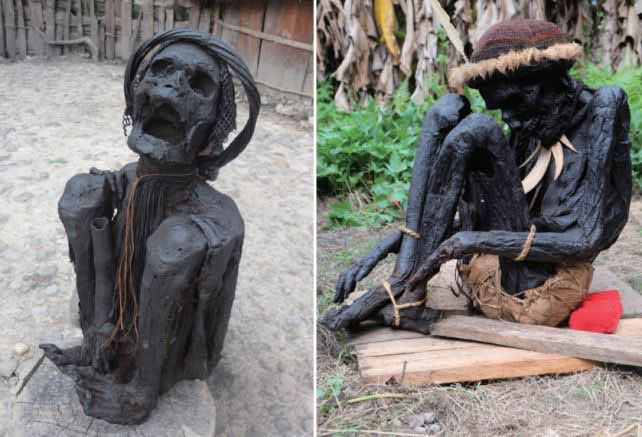

World's oldest mummies were smoke-dried 10,000 years ago in China and Southeast Asia, researchers find Live Science - September 15, 2025
The world's oldest known human mummies were created by smoke-drying corpses 10,000 years ago in Southeast Asia and China, long before mummification became commonplace in Chile and Egypt, new research shows. A study of dozens of ancient graves found in China, the Philippines, Laos, Thailand, Malaysia and Indonesia revealed that many skeletons that were found in a tight fetal position were treated by an extended period of smoke-drying over fire before being buried. Smoking likely carried spiritual, religious, or cultural meanings that went far beyond simply slowing deca
Oldest Human Mummies Discovered, And They're Not What We Expected Live Science - September 15, 2025
A new discovery reveals that we may have been underestimating exactly how widespread the practice has been. Bones that show signs of deliberate mummification have been found across Southeast Asia and southern China, with ages dating back to the pre-Neolithic period up to 12,000 years ago. That's several thousands of years older than the cultures best known for mummification, the Chinchorro people of Chile, who were mummifying their dead 7,000 years ago, and the ancient Egyptians, who were practicing the craft 5,600 years ago.
The reason we might have missed it? The technique used by the earlier Asian cultures is quite different from the more well-known mummification practices. According to a team led by archaeologist Hsiao-chun Hung of the Australian National University, the individuals in their study were slowly smoked over an open fire for long stretches of time.
This practice is similar to burials seen in Australia and New Guinea at a slightly later date, suggesting a cultural link via shared funerary rites.
Archaeologists had previously noticed that a large number of pre-Neolithic burials across a wide geographical region that includes Southeast Asia and southern China have a lot in common. In many, the individual is curled in a crouching or fetal position, tightly bound in place. Moreover, many of these burials show some burning of the bones.
How these cultures processed their dead for burial, and how they achieved the distinctive burial postures, have been open questions. Hung and her colleagues postulated that the remains were smoke-dried, in a similar manner to how some New Guinea Highlands cultures process their dead to this day.
The research team's examination involved 69 bone samples from 54 pre-Neolithic burials, dating between 4,000 and 12,000 years ago, from 11 different sites across southern China, northern Vietnam, and Indonesia.
These bones were subjected to X-ray diffraction (XRD) and Fourier-transform infrared spectroscopy (FTIR). XRD is particularly effective at detecting changes to the structure of the bone that occur under temperatures higher than 500 degrees Celsius (932 Fahrenheit). FTIR is better for detecting bone changes induced by exposure to lower temperatures.
Five of the samples did not return reliable FTIR results, which left 64 samples. Most of these – around 84 percent – showed evidence of heat exposure. Some of the bones also had soot deposits, while different bones taken from the same individual returned different values, suggesting that the heating was applied selectively. There were also cut marks on some of the bones.
Based on their findings, the researchers believe that the process was similar to the modern-day rites of the Dani people in New Guinea. The deceased individual is tightly bound before being suspended over low, smoky fires for periods of weeks to months. Cuts on the bones could indicate cuts made for drainage or disarticulation purposes.